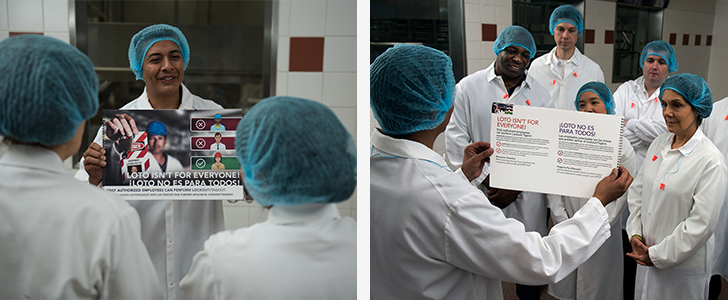Training Beyond Onboarding: Fostering a Culture of Continuous Learning

When new hires walk through the door, you want them on the plant floor as soon as possible. Many food companies have some sort of formal onboarding process, which may or may not include a few days of classroom training, after which they expect new employees to hit the ground running.
Let’s think about this for a minute.How can new food workers actually contribute if they don’t completely understand their roles? Food production is a much more complex, closely regulated industry than many people realize at first blush. It would require a whole lot of hours in the classroom to have any chance of adequately training new workers in a one-and-done download. And that doesn’t even begin to take into account the well-known phenomenon of knowledge loss, where as much as 90% of new training can be forgotten in as little as a few days.

So what should training managers and health and safety directors do? First, consider the nature of your training and its medium of delivery. Are you gathering everyone in a room and subjecting them to three days of triple digit PowerPoint slides? Are you burying them under pages of handouts? Are you showing ten-year-old videos?
The food industry is fortunate to have integrated learning, communication, and performance programs available that can deliver multi-lingual courses via group-based, eLearning, or kiosk modes. These courses minimize time off the floor, increase employee knowledge retention, and facilitate periodic, continuous refresher trainings. The best of these modules are interactive and employ gamification and remediation loops. Their platforms allow for customization and facilitate easy tracking, reporting, and HRIS integration.
But even the best training on the planet is vulnerable to some degree of knowledge loss. That’s where the integration with communications and performance coaching programs becomes key. These additional programs are designed and built specifically to serve as continuous “booster” trainings to stop knowledge loss and keep key safety and operational concepts top of employees’ minds.
These programs include media such as visually impactful, emotionally engaging posters, dynamic digital signage—animated posters, if you will—and spiral bound huddle guides, featuring bold graphics tied to the posters and signage and multi-lingual scripts both to focus employee attention on critical training concepts and to foster supervisor-employee dialog on the floor. To ensure that training is reaching the plant floor and being properly applied, a tablet-based mobile observation and coaching app enables supervisors to confirm and document SOPs, as well as provide another excellent, real-world opportunity for 1-on-1 supervisor-employee interaction.
Do these reinforcement and coaching programs work? Studies indicate that engaging training followed at intervals by continuous “booster” events spaced over time can improve worker knowledge retention by 38%. In an industry where a moment’s inattention can result in serious injury, or where an overlooked process step can lead to an adverse food safety event and resulting recalls, a 38% improvement in training retention is worth money.
Continuous learning can present huge challenges for training professionals faced with developing coordinated programs on their own. But the proven integrated programs described above remove the worry and facilitate well-documented, easily reported employee development processes that will not only stand up to audits but will ensure a culture of continuous learning wherever implemented.
And remember: a knowledgeable workforce is a safe and productive workforce.






